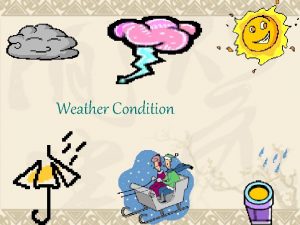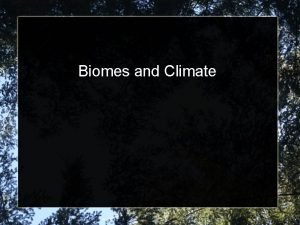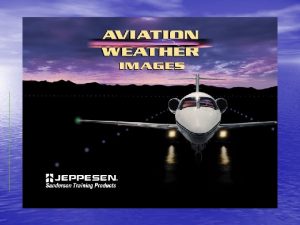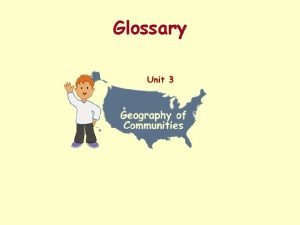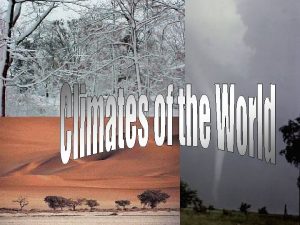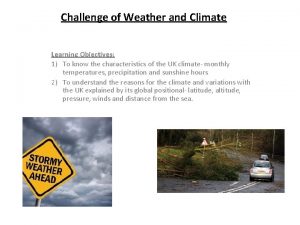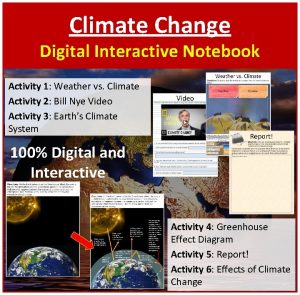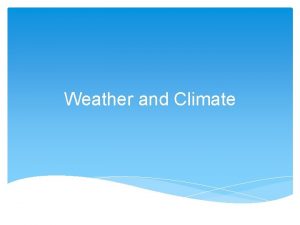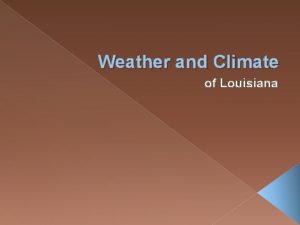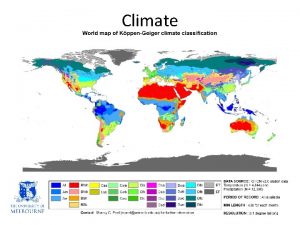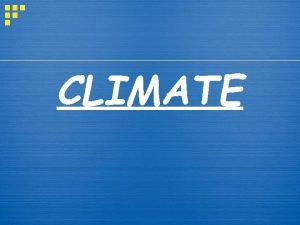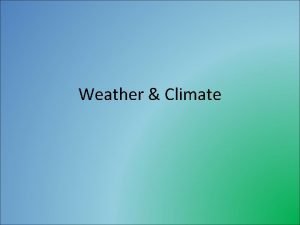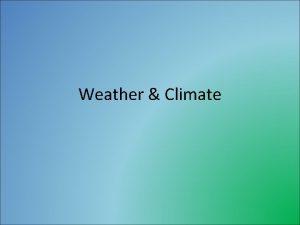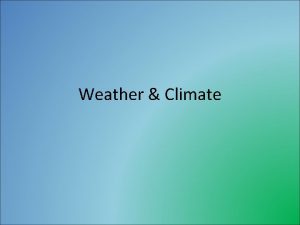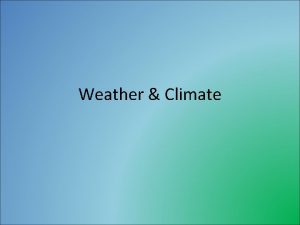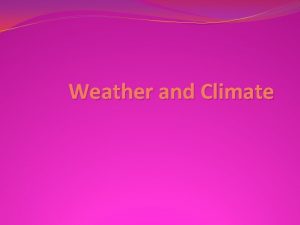Climate versus Weather Climate is the weather conditions











- Slides: 11

Climate versus Weather Climate is the weather conditions in an area in genera or over a long period of time. Long term Weather is state of the atmosphere at a place and time. Short term

Wind & Weather The root of all weather comes from the sun. The sun heats the earth unevenly. Day vs. Night Different surfaces absorption vs. reflection sunlight Sunlight hits equator more directly than the poles. Uneven heat creates pressure differences and wind flows between areas of high and low pressure.

Air Masses Air mass is a large body of air that exhibits uniform temperature and moisture. Warm air masses: tend to form over oceans in warm-temperature regions of the tropics. Cold air masses: tend to form over land in coldweather regions nearer the poles.

Air Masses • • • Moisture in Air: • Maritime (moist) – m • Continental (dry) – c Heat of Air: • Tropical – T • Polar – P Relationship between air and earth: • Air colder than ground – k • Air warmer than ground – w

Air Masses & Cloud Formation A cloud is composed of tiny water droplets or ice crystals. Cloud formation requires the cooling of the air. Warm air can hold large amounts of water. When air cools it cannot hold the water vapor and the extra begins to condense out of the air into liquid water droplets. Cloud formation requires a particle such as dusk or pollen to condense. Eventually enough water vapor will condense to form a cloud.

Air Masses & Cloud Formation Four ways clouds can form: a. Surface heating b. Mountains & Terrain c. Air Masses forced to rise d. Weather fronts

Air Masses & Fronts are the __________ lines of air masses.

Cold Fronts Cold air mass moves into warmer air. Cold air is denser than warm air. Cold air wedges and displaces the warm/ moist air. Warm air then rises, creating towering clouds. Weather caused is intense rain storms with high winds and lighting.

Warm Fronts Warm air rides over cold air near the surface. Warm air is less dense than cold air. Weather caused is less violent and longer lasting clouds with rain.

Occluded Fronts Warm front and cold front push into each other. Cold front moves faster, so I normally overtakes the warm front. This is known as an occluded front.

Stationary Fronts When a warm or cold front stops moving, it becomes a stationary front.
 Name a weather condition
Name a weather condition The average weather conditions of a place
The average weather conditions of a place Humidity brainpop
Humidity brainpop What receives the most solar radiation
What receives the most solar radiation Instrument meteorological conditions
Instrument meteorological conditions Google classroom
Google classroom Climate change 2014 mitigation of climate change
Climate change 2014 mitigation of climate change Factors affecting climate
Factors affecting climate Objectives of weather and climate
Objectives of weather and climate Weather and climate kahoot
Weather and climate kahoot World geography today
World geography today Weather and climate interactive activities
Weather and climate interactive activities
